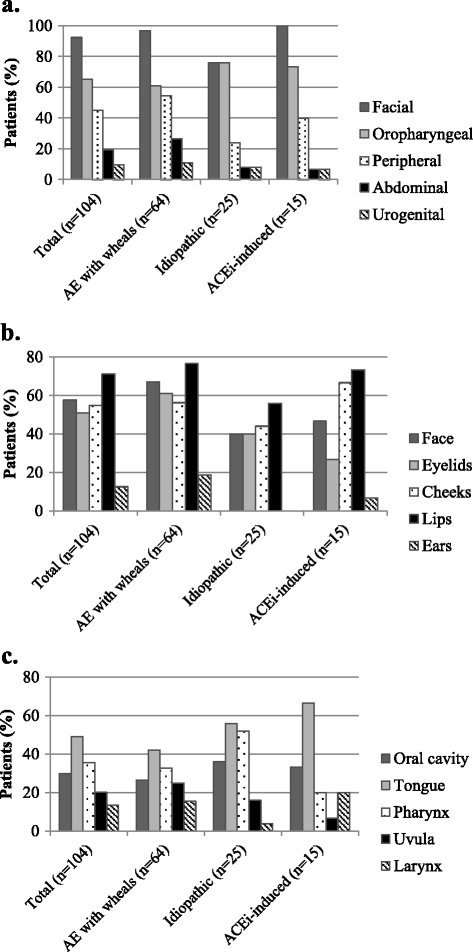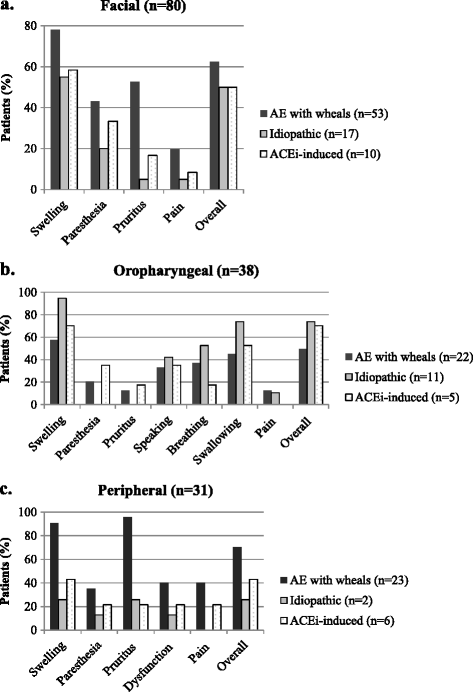Clinical similarities among bradykinin-mediated and mast cell-mediated subtypes of non-hereditary angioedema: a retrospective study
- PMID: 25664168
- PMCID: PMC4320604
- DOI: 10.1186/s13601-015-0049-8
Clinical similarities among bradykinin-mediated and mast cell-mediated subtypes of non-hereditary angioedema: a retrospective study
Abstract
Background: Non-hereditary angioedema (non-HAE) is characterized by local swelling due to self-limiting, subcutaneous or submucosal extravasation of fluid, and can be divided into three subtypes. These subtypes are believed to have different pathophysiological backgrounds and are referred to in recent guidelines as bradykinin-mediated (e.g. caused by angiotensin-converting-enzyme-inhibitors), mast cell-mediated (e.g. angioedema with wheals) or idiopathic (cause unknown). Bradykinin-mediated subtypes are more closely related to hereditary angioedema than the other forms. Because clinical features of these non-HAE subtypes have not been studied in detail, we have looked at the clinical characteristics of symptoms and potential differences in clinical presentation of bradykinin-mediated and mast cell-mediated angioedema (AE) subtypes.
Methods: A questionnaire was sent to patients presenting with AE at our tertiary outpatient clinic to document clinical characteristics, potential triggers and location of AE. The severity of AE attacks was analysed using visual analogue scales (VAS).
Results: The questionnaire was returned by 106 patients, of which 104 were included in the analysis. AE with wheals, idiopathic AE, and drug-associated AE occurred in 64 (62%), 25 (24%) and 15 patients (14%) respectively. Most patients (62%) reported prodromal symptoms while 63% reported multiple locations for an attack. Face and oropharynx were the main locations of AE attacks of any subtype while swelling was the symptom most frequently reported as severe. Overall severity of the last attack was indicated as severe by 68% of the patients. There were no differences between the subgroups.
Conclusion: This similarity in clinical presentation raises the possibility that ACEi-induced, mast cell-mediated and idiopathic AE share common pathways.
Keywords: Angioedema; Drug-associated; Idiopathic; Wheals.
Figures


References
LinkOut - more resources
Full Text Sources
Other Literature Sources

